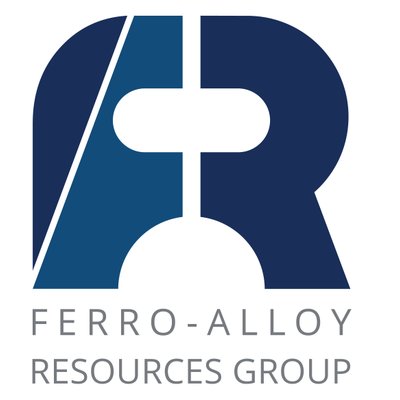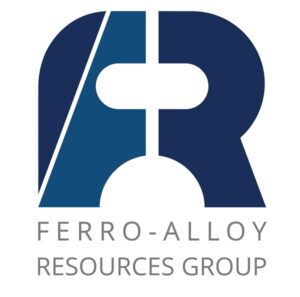Ferro-Alloy Resources Ltd (LON:FAR), the vanadium producer and developer of the large Balasausqandiq vanadium deposit in Southern Kazakhstan, has announced a general trading update, an update on the planned expansion of the existing processing plant treating purchased concentrates and the receipt of Kazakhstan grant funding for a vanadium electrolyte project
Trading Update
During Q4 2022 and primarily in December, the Company experienced delays in the delivery of concentrates to the processing plant which resulted in reduced output. The Company therefore focused on the initiation of nickel concentrate production which partially mitigated the impact but did not fully make up the shortfall. Consequently, the trading results for the final quarter of 2022 and the first half of January 2023 have been lower than anticipated.
Concentrate deliveries have now started to arrive at the plant site in significant quantities and, to help avoid repetition of the shortfall, the Company has signed a new regular concentrate delivery contract with an additional supplier, the first consignment of which is scheduled for delivery at the plant site in March 2023.
Nevertheless, the shortfall of production experienced during the final quarter of 2022, and in particular December, will negatively impact the Company’s 2022 financial results. Gross revenue for the year ended 31 December 2022 is expected to be in the region of US$6.8m with a net loss expected to be in the region of US$3.3m, lower than current market expectations, subject to the finalisation of the year end accounts. The Company’s cash position at 31 December 2022 was US$4.2m (2021: US$2.8m).
Existing Processing Plant Update
Vanadium pentoxide circuit
The design of the Company’s new dissociation oven to convert AMV to vanadium pentoxide, for which a higher price is obtained, has been modified to allow for the future production of various oxides of vanadium as part of the electrolyte project noted above. The oven is in transit to the plant and will be commissioned immediately upon receipt. A previous dissociation oven, procured for this purpose in 2021, was diverted to the more profitable use of drying calcium molybdate prior to smelting to produce ferro-molybdenum.
The Company has also installed a further press-filter which is used in a subsequent process to re-pulpate the solid residues and achieve an additional recovery of vanadium, increasing the overall recovery of vanadium from the concentrates.
Ferro-molybdenum circuit
The augmentation of the molybdenum recovery circuit has been completed and is operating well. The capacity of the molybdenum extraction process has almost doubled, although the actual amount produced will depend on the molybdenum content of the purchased concentrates.
Nickel circuit
After extraction of vanadium and molybdenum from the purchased concentrates, the solid residues contain low grades of nickel which, until the end of 2021, were sold at relatively low prices. Since the beginning of 2022, the nickel-rich residues have been stockpiled and the Company has installed a new roasting oven and associated equipment to upgrade the nickel content to a level which can be sold at commercial nickel concentrate prices or further treated to produce ferro-nickel.
The circuit operates by way of a roasting and leaching process to upgrade the concentrate to a grade which can be sold for around half of the prevailing international nickel metal price. During December 2022, the Company tested the process and developed the appropriate operating regimes, producing 6.8 tonnes of contained nickel in concentrate.
The process produces an additional by-product comprising sodium hydroaluminate which can also be potentially sold, providing a possible third revenue stream.
The flexibility to use the new equipment for nickel concentration or further vanadium production, and the option to further treat the nickel concentrate to make ferro-nickel, will allow the Company to optimise the configuration to suit the availability of concentrates, local product and reagent prices and thereby maximise profitability.
Vanadium Electrolyte Grant Funding
The Company’s wholly owned Kazakhstan subsidiary, TOO Firma Balausa (“Balausa”), is to receive grant funding of KZT300 million (approximately US$638,000) (the “Grant”) for the development of technology for the production of mixed vanadium oxides for use in vanadium redox flow batteries (“VRFBs”). The Grant funding will be received by Balausa during the course of 2023 and 2024.
The decision to award the Grant was made by Kazakhstan’s National Scientific Council which awarded the Grant for the most promising commercialisation of the results of scientific and scientific-technical activities.
Balausa will provide contributing funding of KZT60 million (approximately US$128,000). The total funding will be used to install the equipment needed at the existing plant to manufacture the mixed vanadium oxides required to produce vanadium electrolyte and to procure and install test-equipment and a VRFB at the premises of the Physical-Technical Institute in Almaty, a part of the Satbayev University.
After further development and testing of the technology and the evaluation of the performance of the VRFB, the project involves the production and sale by Balausa, on a commercial basis, of three tonnes of mixed vanadium oxides. Balausa will have ownership of all project assets and will receive all revenues, continuing after the project period.
The project is scheduled to last for 26 months, after which the Company plans to continue the production of vanadium oxides to satisfy any regional demand for electrolyte or for other purposes.
The Company announced on 2 September 2020 that it had developed and patented the technology to produce vanadium electrolyte directly from ammonium metavanadate (“AMV”). The ability to make vanadium electrolyte directly from AMV provides not only the required know-how to enter this market, but also a cost advantage over traditional processes. The Grant will enable the next steps to be taken to progress the commercialisation of vanadium electrolyte.
Outlook for 2023
The Company believes that both the production and financial results for 2023 are likely to be significantly better than 2022 and result in the Company being operationally profitable because of:
· increased quantity of concentrates to be treated;
· increased recoveries of vanadium, molybdenum and nickel from each tonne treated;
· higher prices expected for vanadium as a result of the conversion of AMV to vanadium pentoxide or other oxides; and
· return to more normal levels of transport, fuel and reagent costs which in 2022 were impacted by the ending of the pandemic and the commencement of the Ukrainian invasion.
The main activity in 2023 will continue to be the completion of the feasibility study into the giant Balasausqandiq vanadium project, expected in Q4 2023.
Nick Bridgen, CEO, commented: “The completion of these plans means that we are now recovering far more value from each tonne of concentrate treated, greatly increasing operating margins. Together with the new procurement contract, which should greatly increase the tonnes throughput, the impact on 2023 should be substantial.”


